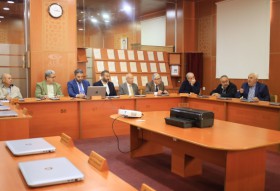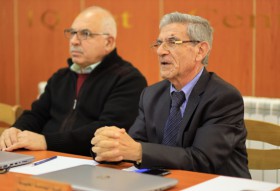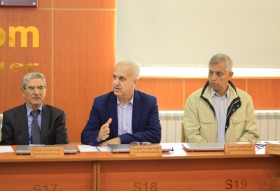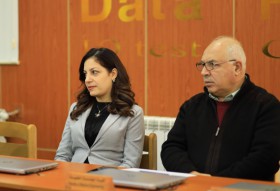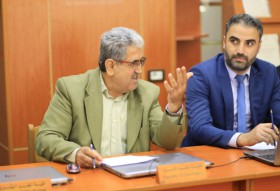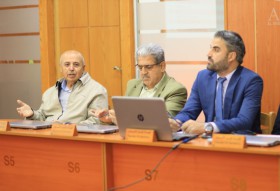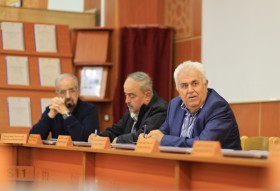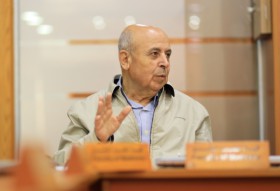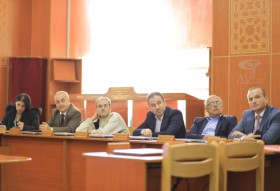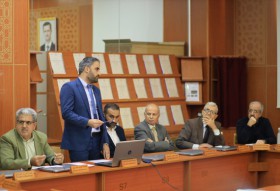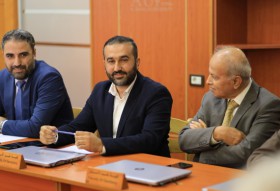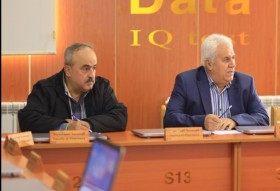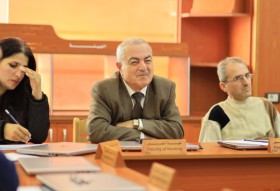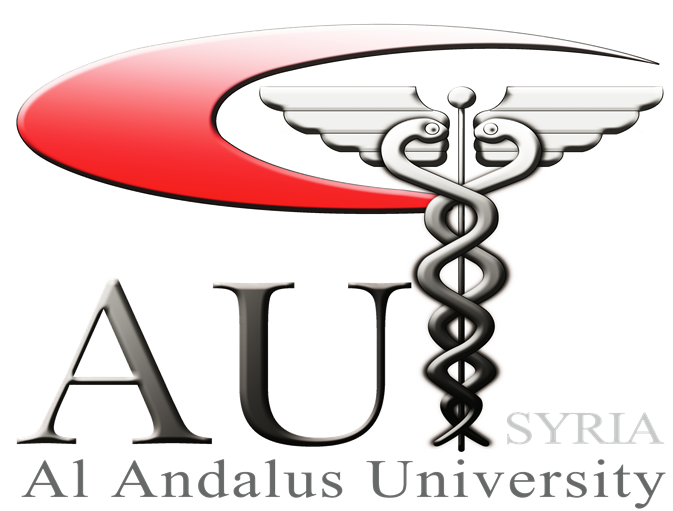A Workshop on the Prospects of the Development of the Medical Physics Curriculum in Al-Andalus University Faculties
- Publish Date:
- 15/11/2022
A Workshop on the Prospects of the Development of the Medical Physics Curriculum in Al-Andalus University Faculties
Under the patronage of Prof. Dr. Mohammed Amer Al-Mardini, University President, and as part of the activities of the Basic Sciences Development Program at Al-Andalus University, a medical physics workshop was held at the Scientific Research Committee on Saturday 12-11-2022.
Prof. Dr. Hani Sha'aban, the supervisor of the medical physics program, opened the activities of the workshop, outlined its objectives, and welcomed its attendees.
Then Prof. Dr. Abd Al-Naser Harfouch, Chairman of the University's Board of Trustees, pointed out that Al-Andalus University is the first university in the Syrian Arab Republic to take the first step in syllabus development through establishing scientific workshops, highlighting the importance of basic sciences as a touchstone for medical sciences.
Prof. Dr. Muhammad Yehia Mualla, Chairman of the Academic Accreditation Committee, gave a speech on the importance of basic sciences and the necessity of comparing what is taught at Al-Andalus University to international universities and focusing on the sources that depend on filling the gaps in teaching courses and achieving global standards for global accreditation, especially those of the European ESG and the ACQUIN Foundation.
Prof. Dr. Ali Ibrahim, University Vice President for Administrative and Students Affairs, explained the importance of working on developing basic sciences at the university and the need to work in the near future to develop curricula for specialized subjects in the university's medical faculties.
Dr. Natheer Dayoub presented a segment on the basic and medical principles of physical applications in ophthalmology, nuclear medicine, and laser, which are accredited as the main topics of the Medical Physics course for the first year in the Medicine Faculty.
Then, Dr. Asa'ad Abbas explained the importance of introducing laser and nanotechnology topics in the university due to their scientific and medical vitality. He presented and matched what is taught at the Al-Andalus University and international universities, concluding that the similarity rate in their scientific content reached up to 90%.
Dr. Firas Saleh gave an explanatory presentation that included the study plan for the preparatory year for international medical universities and the basic sciences taught there before entering medical faculties. Dr. Saleh based his presentation on the standards of the Association of American Medical Colleges, which identified the topics that must be studied before entering the undergraduate pre-med program.
A group of international universities classified in Scimagoir was presented, and the similarity between their physics curricula and those of our university's Faculty of Dentistry reached an average of 96%, while there was a 90% similarity to those of the university's Faculty of Pharmacy.
Dr. Akram Hatem introduced the importance of medical physics for the biomedical engineer since medical devices primarily rely on physical principles. He also gave a detailed explanation of the contents of medical physics courses, presenting a set of international universities and the 90% similarity in scientific content between those world universities and that of the university's Biomedical Engineering Faculty.
